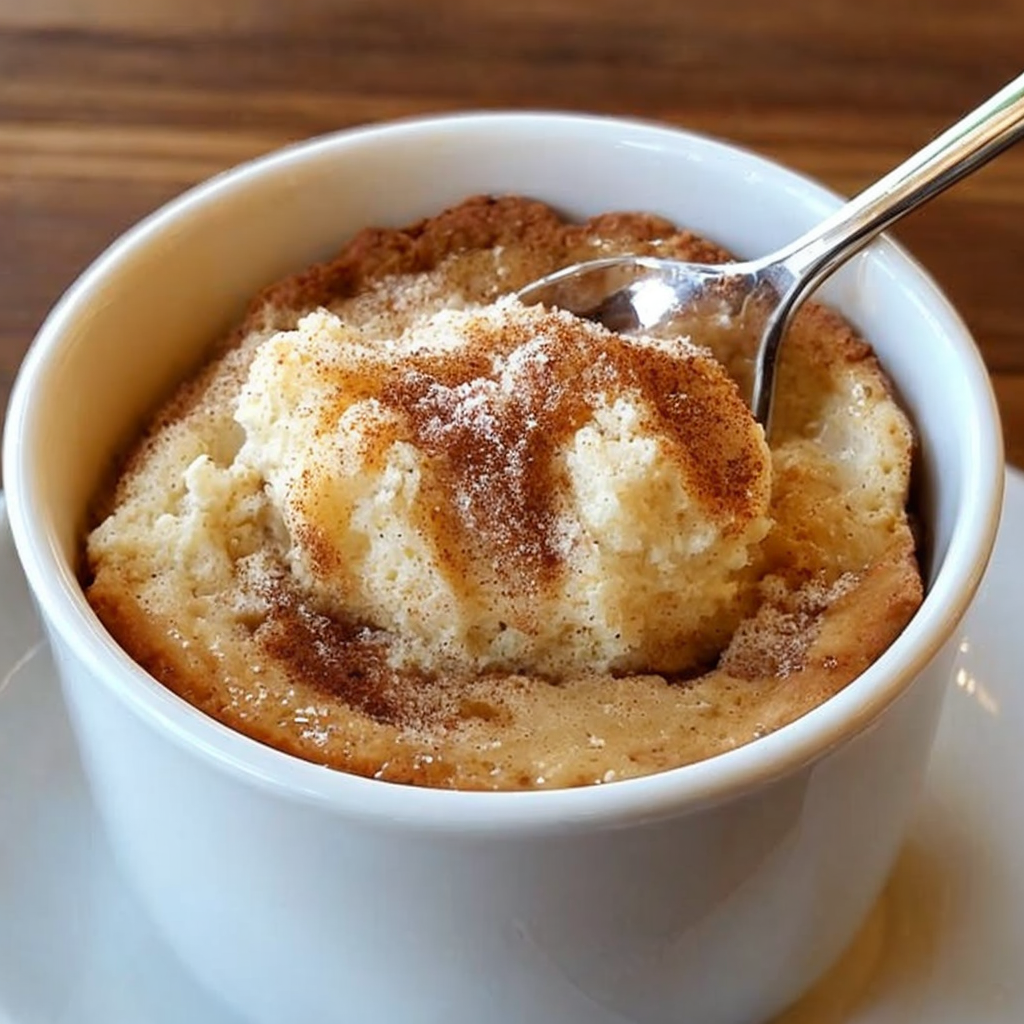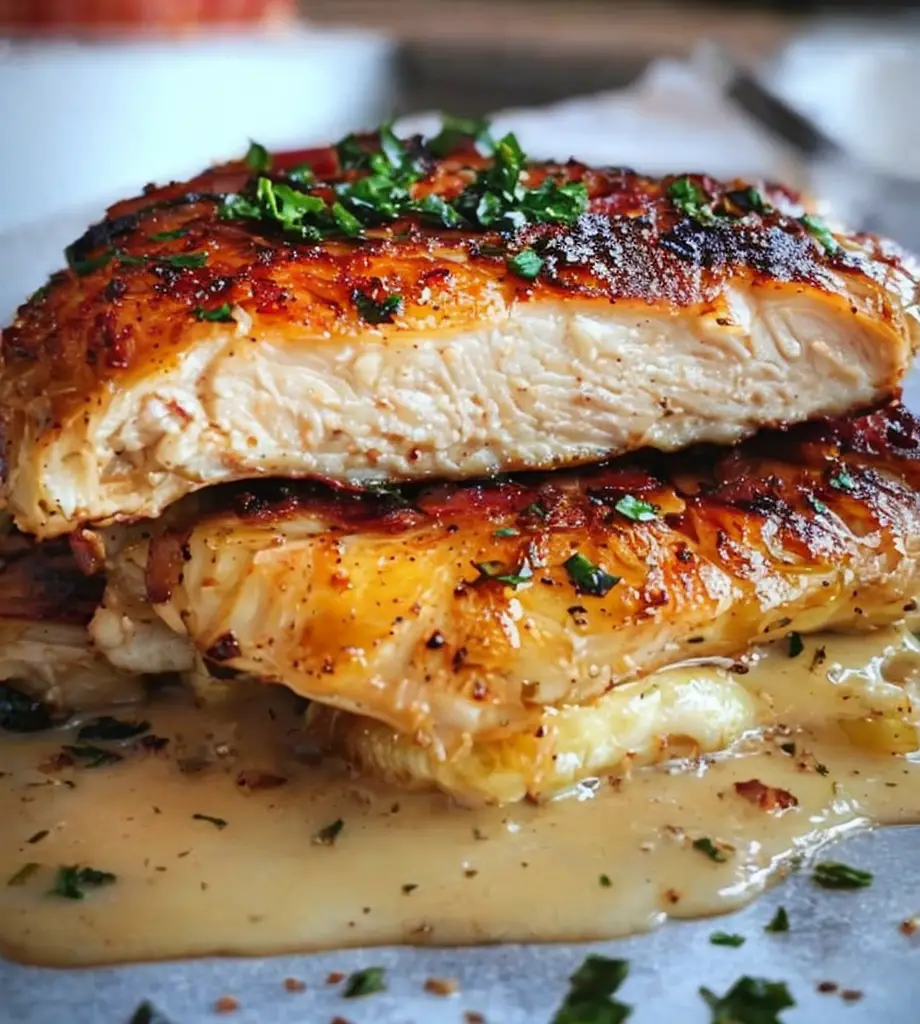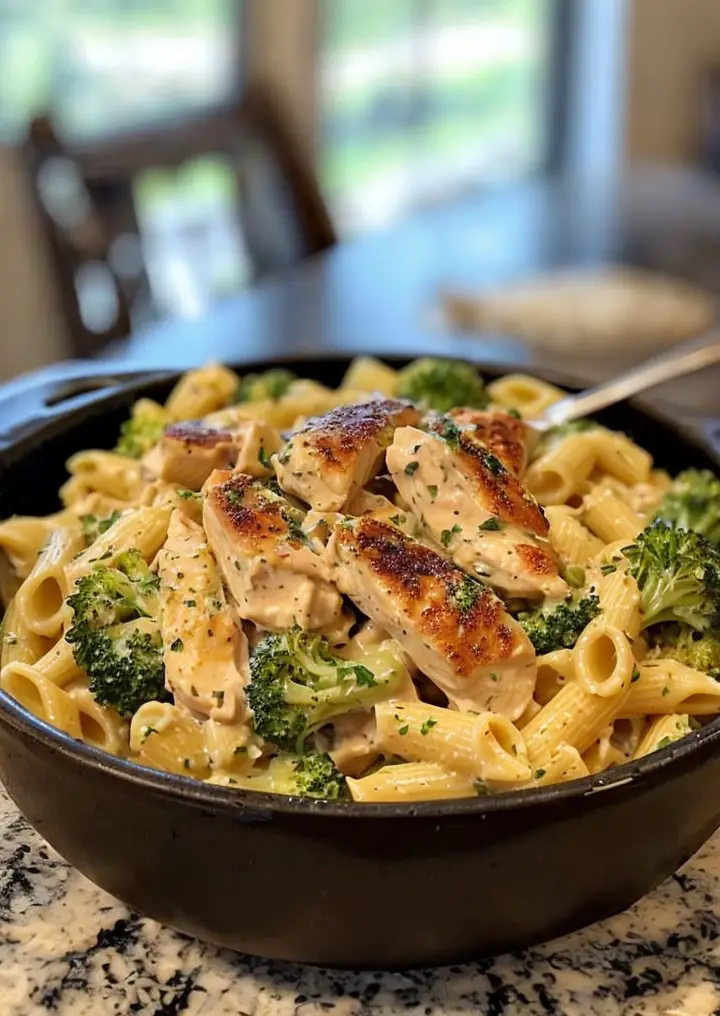Perfect Air Fryer Baked Sweet Potatoes: A Healthier Twist on a Classic Dish
Sweet potatoes are a versatile and nutritious ingredient that has long been a favorite for home cooks. When prepared in an air fryer, they develop a beautiful caramelized exterior while retaining a perfectly tender inside. This recipe for air fryer baked sweet potatoes is not only quick and easy but also gives this beloved side dish a healthful twist. Imagine fluffy, sweet, and savory bites that are bursting with flavor, perfectly suited for any meal of the day.
With the air fryer’s ability to create crispy textures without all the added oil, this method elevates the humble baked sweet potato into a gourmet experience. The natural sweetness of the potatoes pairs wonderfully with a sprinkle of sea salt and your favorite toppings, whether it’s a dollop of Greek yogurt, olive oil, or a sprinkle of spices. You’ll find that these air-fried sweet potatoes become a staple in your kitchen, offering satisfaction with every delicious bite.
Quick Recipe Highlights
- Flavor Profile: Sweet, savory, and slightly smoky, the air fryer enhances the natural sweetness of the potatoes.
- Texture: Enjoy a delightful contrast of crispy skin with a soft and fluffy interior.
- Aroma: The cooking process brings out an inviting aroma of roasted sweet potatoes, making your kitchen smell amazing.
- Visual Appeal: Eye-catching golden-brown skins with a bright orange flesh make this dish not only tasty but beautiful.
- Skill Level Needed: This recipe is beginner-friendly; anyone can master it with minimal effort.
- Special Equipment: You’ll need an air fryer to achieve the best results for this recipe.
Recipe Overview
- Difficulty Level: This is an easy recipe that requires minimal cooking experience. Perfect for beginners or busy weeknights.
- Category: Ideal as a side dish for dinner, a delicious addition to brunch, or a satisfying snack.
- Cuisine: Sweet potatoes are a staple in many cuisines, including Southern and Caribbean cooking, often praised for their versatility.
- Cost: A budget-friendly recipe, sweet potatoes generally cost around $0.50 to $1.00 each, making this an economical choice.
- Season: Available year-round, but their peak season is in the fall and winter months, making them a cozy, seasonal favorite.
- Occasion: Great for family dinners, potlucks, or as a healthy side dish for holiday celebrations.
Why You’ll Love This Recipe
The taste and texture of air fryer baked sweet potatoes are simply irresistible. Their natural sweetness is complemented by a slight crispiness from the air fryer, making each bite a delightful experience. Add in your favorite toppings, and you can customize it to suit any palate, transforming these sweet potatoes from a simple side dish into a flavorful centerpiece.
Convenience is another great aspect of this recipe. In just 40 minutes, you can have a healthy and delicious dish on your table, requiring only 10 minutes of prep time. It’s a fantastic option for busy weeknights, and since the air fryer cooks the potatoes faster than traditional baking, you’ll save time while still enjoying a wholesome meal.
Nutritionally speaking, sweet potatoes are powerhouse vegetables packed with vitamins, minerals, and fiber. Rich in vitamin A and antioxidants, they contribute to better immune health while providing a great source of energy. This recipe is not just delicious but also serves as a nutritious addition to your diet.
Social gatherings and entertaining become much more enjoyable with this dish. Air fryer baked sweet potatoes are perfect for sharing with friends and family, allowing everyone to customize their own servings with toppings of their choice. They’re a perfect conversation starter at any gathering, bringing a touch of freshness to your table.
Last but not least, this recipe is cost-effective and accessible. Sweet potatoes are affordable and can be found at most grocery stores prominent in your local markets. With such minimal investment, you can serve a satisfying dish that pleases both your taste buds and your wallet.
Historical Background and Cultural Significance
The sweet potato’s journey began thousands of years ago in Central and South America. Indigenous cultures valued this tuber for its high nutritional content and versatility in cooking. As it made its way around the globe, sweet potatoes became integrated into various culinary traditions, from the savory Southern dishes in the United States to the delightful desserts of the Caribbean.
Culturally, the sweet potato holds significant value in many communities. It symbolizes harvest festivals and is often used in holiday meals and gatherings. For instance, sweet potatoes feature prominently in Thanksgiving celebrations in the United States, highlighting their importance as a comfort food.
Over the years, as cooking technologies have evolved, sweet potatoes have transitioned from traditional baking methods to modern approaches like air frying. This evolution has allowed for unique textures and flavors, catering to today’s health-conscious consumers who seek delicious meals without excess fat.
Regionally, there are numerous variations of sweet potato dishes across the world. From candied sweet potatoes in the Southern U.S. to sweet potato pie, this ingredient has inspired countless recipes that celebrate its natural sweetness and nutritional benefits.
Ingredient Deep Dive
– Sweet Potatoes: These nutrient-dense tubers are a central ingredient in this recipe. They provide carbohydrates, fiber, and vitamins, particularly a high amount of vitamin A, beneficial for eye health. When selecting sweet potatoes, look for smooth skin and firm flesh; avoid those with soft spots or blemishes. Stored in a cool, dark place, they can last for weeks. For substitutions, consider using other root vegetables such as butternut squash or carrots.
– Olive Oil: Used to enhance flavor and help achieve a crispy texture, olive oil is rich in healthy fats. Choosing extra-virgin olive oil will provide additional antioxidants. Always store olive oil in a cool, dark place to maintain its quality. If you need a substitute, avocado oil or a non-stick cooking spray can work well.
Common Mistakes to Avoid
- Not preheating the air fryer; this can result in uneven cooking.
- Overcrowding the air fryer basket, leading to soggy potatoes instead of crispy ones.
- Skipping seasoning, which can dull the natural flavors of sweet potatoes.
- Selecting potatoes that are too large; uniformity in size helps with even cooking.
- Not checking for doneness; testing with a fork is essential to avoid undercooking.
- Forgetting to poke holes in the skin; this helps steam escape and prevents bursting.
- Using cold sweet potatoes right from the fridge; let them sit at room temperature for better cooking.
- Using low-quality cooking oil, which can affect flavor.
- Skipping the final resting phase, which allows the potatoes to steam and soften further.
- Not adjusting cooking times for different sizes; small potatoes will cook faster than large ones.
Essential Techniques
– Preheating the Air Fryer: This step is crucial as it ensures that the sweet potatoes begin cooking immediately, helping to develop a crispy skin. To master this, set your air fryer to the recommended temperature and allow it to heat for about 5 minutes before placing the potatoes inside. Watch out for the preheating indicator, ensuring the air fryer reaches the desired temperature.
– Checking for Doneness: The best way to ensure your sweet potatoes are cooked to perfection is to use a fork to pierce them. A perfectly baked sweet potato should feel soft but not mushy. To master this, start checking for doneness at least 5 minutes before the recommended cooking time ends, adjusting as necessary.
Pro Tips for Perfect Air Fryer Baked Sweet Potatoes
1. **Use uniform-sized sweet potatoes:** This helps ensure even cooking. If you’re using a variety of sizes, try to pick size ranges that will allow them to finish cooking at the same time.
2. **Don’t skip the seasoning:** A dash of salt and a sprinkle of spices can transform flavor; consider using paprika or cayenne for an extra kick.
3. **Brush with oil:** Lightly brush or spray the sweet potatoes with olive oil before cooking for optimal crispiness.
4. **Flip halfway through cooking:** Turn the sweet potatoes halfway through the cooking time to ensure even roasting on all sides.
5. **Experiment with toppings:** Get creative by adding toppings after cooking; think yogurt, avocado, or a sprinkle of herbs to elevate your baked sweet potato experience.
6. **Cook in batches if needed:** If you’re making a larger quantity, do this in batches to avoid overcrowding the air fryer basket.
7. **Allow resting time after cooking:** This allows the potatoes to finish steaming, making them even fluffier.
8. **Store leftovers properly:** Keep baked sweet potatoes in an airtight container in the refrigerator for up to 5 days for best results.
Variations and Adaptations
Sweet potatoes can be enjoyed in countless variations. For regional flair, you could try adding spices such as cumin or coriander for a Middle Eastern-inspired roasted sweet potato dish. In the fall, incorporate seasonal spices like nutmeg or cinnamon to create a cozy flavor profile.
Seasonal adaptations can also enhance the dish—try topping your sweet potatoes with pumpkin puree and pecans for a festive autumn treat. For dietary modifications, those following a low-carb or keto diet can enjoy alternatives like cauliflower or turnips, which can mimic the taste and texture but with fewer carbs.
Flavor variations can be quite exciting as well. If you’re feeling adventurous, spice your air fryer baked sweet potatoes with chili powder for a bit of heat or lemon zest for a refreshing twist. When it comes to texture modifications, consider mashing the baked sweet potatoes with butter for a creamy side dish.
Presentation alternatives are also essential; serve sweet potatoes in halves and drizzle with balsamic reduction or yogurt for an eye-catching feel.
Serving and Presentation Guide
Serve your air fryer baked sweet potatoes halved on a vibrant platter to showcase their beautiful color. For garnishing, sprinkle fresh herbs like parsley or chives on top for a pop of green. Traditional accompaniments include a dollop of sour cream or a drizzle of extra virgin olive oil, enhancing both flavor and visual appeal.
For modern serving suggestions, consider creating sweet potato bowls by adding toppings such as black beans, shredded cheese, or salsa to each half. Always serve hot, as they are best enjoyed warm, and pay attention to portion control, offering two halves per serving for a satisfying side that complements any meal.
Wine and Beverage Pairing
Wine pairings for sweet potatoes can enhance the dining experience—a light white wine like Sauvignon Blanc or a fruity Beaujolais works well with the natural sweetness of the potatoes. If you’re looking for non-alcoholic alternatives, consider a refreshing iced herbal tea or sparkling water infused with citrus to cleanse your palate between bites.
For those who enjoy a robust flavor, a rich chai latte or a cup of spiced cider could also beautifully complement your sweet potatoes, providing a delightful contrast to their earthy taste.
Storage and Shelf Life
When it comes to storage, it’s essential to let the cooked sweet potatoes cool completely before placing them in an airtight container. Store them in the refrigerator at a temperature below 40°F to keep fresh, and they will last for up to 5 days.
Signs of spoilage to watch for include a slimy texture or an off smell. To reheat, place them in the microwave for 1-2 minutes or pop them back in the air fryer for about 5 minutes for a crispy texture. If you wish to freeze them, make sure to cool and wrap them tightly, and they can last for up to 3 months in the freezer.
Make Ahead Strategies
To save time, you can prepare your sweet potatoes in advance. Wash and poke holes in them, then store them in the fridge for up to 24 hours before cooking. This allows you to have a fast meal prep on a busy evening.
As for assembly, if you like, pre-cook the sweet potatoes and refrigerate them without any toppings. When you’re ready to serve, simply air fry them again for a crispy finish and add your favorite toppings. Don’t forget to add fresh elements like herbs or a squeeze of lemon after reheating for the best flavor.
Scaling Instructions
When scaling this recipe up or down, keep in mind the size of your air fryer. If you’re halving the recipe, simply reduce the number of sweet potatoes and adjust seasoning to taste. Conversely, for larger gatherings, it’s best to cook in batches to maintain the integrity of the crisp texture.
Additionally, while cooking times generally remain consistent, smaller sweet potatoes may require slightly less cooking time, and larger ones may take longer. Always check for doneness with a fork.
Nutritional Deep Dive
A medium-sized sweet potato contains around 114 calories, making it an excellent low-calorie option. It’s an excellent source of carbs and fiber while being low in fat, typically containing only 0.2 grams per serving. Rich in vitamins A and C, sweet potatoes support immune function and skin health.
Additionally, they provide a good source of potassium, which helps regulate blood pressure, while their high fiber content aids in digestion. Remember to moderate your portions, as portion size can affect carbohydrate levels for those monitoring sugar intake.
Dietary Adaptations
For gluten-free diets, air fryer baked sweet potatoes are naturally safe to enjoy without any modifications. For dairy-free options, top with coconut yogurt instead of sour cream, making it both creamy and flavorful.
Vegans can enhance their sweet potatoes with nut toppings or tahini sauce, while those on a low-carb or keto diet should consider alternatives like spaghetti squash, creating a similar texture while skipping the starch.
Following the Paleo lifestyle? Simply season with herbs and spices, and you have a delicious addition to your meal plan. The versatility of sweet potatoes ensures that everyone will find a way to enjoy this appealing dish.
Troubleshooting Guide
Texture issues can occur if sweet potatoes are undercooked; ensure they’re tender all the way through by using a fork before serving. If your baked sweet potatoes come out too dry, consider reducing the cooking time next batch or adding moisture during reheating.
Flavor balance can be challenging; if they lack sweetness, a small sprinkle of cinnamon or a drizzle of honey can elevate the flavor. Temperature problems might arise if your air fryer is not set correctly; always refer to the instructions for your specific model.
If you’re facing equipment challenges, ensure not to overcrowd your air fryer, as this will lead to uneven cooking. Ingredient substitutions may affect timing; it’s essential to monitor cooking closely when making adjustments to the recipe.
Recipe Success Stories
Community feedback on this recipe has been overwhelmingly positive. Readers have shared variations they’ve tried, such as stuffing sweet potatoes with chickpeas and spices for a filling meal. Adaptation stories tell of families introducing new toppings like feta and olives, creating a Mediterranean-inspired dish that has become a new favorite.
Photography tips often emerge from the vibrant colors of the baked sweet potatoes; readers enjoy snapping pictures of their creations to share online. Overall, this recipe serves as a reliable go-to that many are proud to serve during family dinners and holiday gatherings.
Frequently Asked Questions
1. Can I make air fryer baked sweet potatoes without oil?
Yes, you can skip the oil; simply season your sweet potatoes before cooking. However, oil helps achieve a crispier texture, so consider a light spray for optimal results.
2. How do I know when sweet potatoes are done baking?
The best way to check is by inserting a fork. If it goes in easily, your sweet potatoes are cooked through. Additionally, the skin should be tender and slightly crispy.
3. What toppings go well with sweet potatoes?
Sweet potatoes pair wonderfully with toppings like Greek yogurt, avocado, chickpeas, or simply butter and brown sugar. The choice is yours!
4. Can I microwave sweet potatoes instead?
Yes, microwaving is an option! Microwave sweet potatoes on high for about 5-10 minutes until fully cooked, and then finish in the air fryer for crispiness, if desired.
5. Can I store leftovers?
Absolutely! Cooked sweet potatoes can be stored in an airtight container in the fridge for up to 5 days. Just reheat in the microwave or air fryer before serving.
6. Can I freeze baked sweet potatoes?
Yes, you can freeze baked sweet potatoes. Allow them to cool, wrap them well, and store in the freezer for up to 3 months. Reheat directly from frozen.
7. Are sweet potatoes healthier than white potatoes?
Sweet potatoes are often considered healthier due to their higher nutrient density, particularly in vitamin A and fiber, making them a better choice for health-conscious individuals.
8. What’s the best way to season sweet potatoes?
Simple seasonings like salt, pepper, and olive oil work well; however, feel free to experiment with spices like cinnamon, paprika, or garlic powder for additional flavor.
9. Are there different types of sweet potatoes?
Yes, there are several varieties of sweet potatoes, including orange, purple, and white-fleshed options. Each type offers unique flavors and nutritional profiles.
10. Do I need to peel sweet potatoes before cooking?
No, you can cook sweet potatoes with the skin on. The skin is nutritious and adds texture to the finished dish.
Additional Resources
If you love this air fryer baked sweet potato recipe, check out other related recipes on our blog to explore more flavorful dishes. Our technique guides can help you perfect your air fryer skills, alongside ingredient information to make you a more confident cook.
Investing in quality equipment, like a reliable air fryer, can further enhance your cooking experience. Seasonal variations can inspire creative adaptations, and our recipe archives are filled with ideas that celebrate fresh ingredients throughout the year.
Join the Conversation
We’d love for you to share your air fryer baked sweet potato creations with us on social media! Snap a photo and tag us with your favorite toppings or unique adaptations. Engage with the community by leaving reviews and feedback on this recipe, and share your insights or cooking tips that can help fellow food enthusiasts discover the joy of baking sweet potatoes in the air fryer.
The Recipe
Air Fryer Baked Sweet Potatoes
Serves: 4
Prep Time: 10 mins
Cook Time: 30 mins
Total Time: 40 mins
Kitchen Equipment Needed
- Air Fryer
- Fork
- Cutting board
- Knife
- Airtight container for storage
Ingredients
- 4 medium sweet potatoes
- 1 tablespoon olive oil
- Salt, to taste
- Optional toppings: Greek yogurt, avocado, spices, etc.
Directions
- Preheat your air fryer to 400°F (200°C).
- Wash the sweet potatoes thoroughly and poke holes all over with a fork.
- Brush or spray the sweet potatoes lightly with olive oil and sprinkle salt.
- Place sweet potatoes in the air fryer basket, ensuring they are not overcrowded.
- Cook for about 30 minutes, flipping halfway through until tender and crispy.
- Remove from the air fryer and let them rest for a few minutes before serving.
- Top with your favorite toppings and enjoy!
Recipe Notes
- Adjust cooking time based on the size of your sweet potatoes.
- Experiment with different toppings to match your flavor preferences.
- Store leftovers in an airtight container in the fridge for up to 5 days.
- You can freeze cooked sweet potatoes for up to 3 months—just thaw and reheat before serving.




